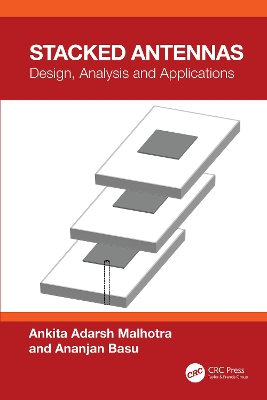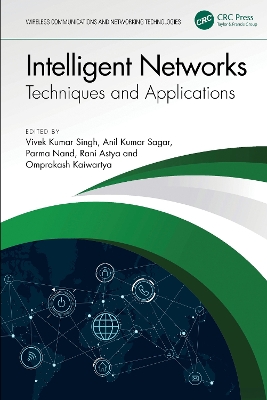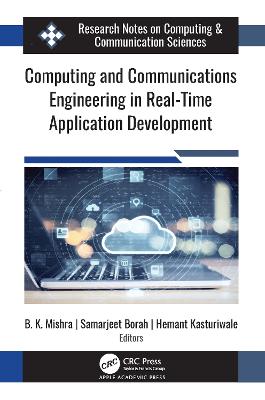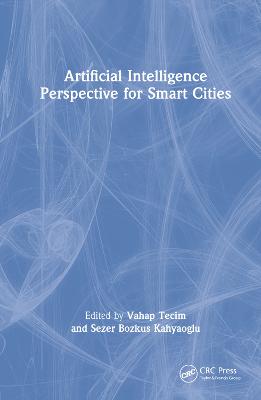Comprehensive Guide to Information Security Management and Audit
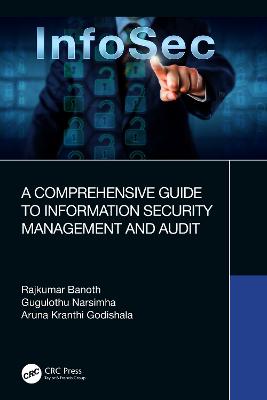 portes grátis
portes grátis
Comprehensive Guide to Information Security Management and Audit
Banoth, Rajkumar; Narsimha, Gugulothu; Kranthi Godishala, Aruna
Taylor & Francis Ltd
09/2022
172
Dura
Inglês
9781032344430
15 a 20 dias
Descrição não disponível.
Chapter 1: Information Security & Management System
1. Information Security Overview
1.1 The OSI Security Architecture
1.2 Information Security
1.3 Security Services
1.4 Security Mechanisms
1.5 The CIA and DAD Triads
1.6 ISMS Purpose and Objectives
1.7 Frameworks
1.8 Security Standards
1.9 Standard
1.10 Security Procedures
1.11 Security Guidelines
1.12 Compliance vs. Conformance
Chapter: 2 Audit Planning and Preparation
2.1 Reasons for Auditing
2.2 Audit Principles
2.2.1 Planning
2.2.2 Honesty
2.2.3 Secrecy
2.2.4 Audit Evidence
2.2.5 Internal Control System
2.2.6 Skill and Competence
2.2.7 Work Done by Others
2.2.8 Working Papers
2.2.9 Legal Framework
2.2.10 Audit Report
2.3 Process of Audit Program Management
2.3.1 Preparing for an Audit
2.3.2 Audit Process
2.4 Audit Competence and Evaluation Methods
2.4.1 Audit of Individuals
2.4.2 Audit of Sole-Trader's Books of Accounts
2.4.3 Audit of Partnership Firm
2.4.4 Government Audit
2.4.5 Statutory Audit
2.4.6 Audit of Companies
2.4.7 Audit of Trust
2.4.8 Audit of Co-operative Societies
2.4.9 Audit of other Institutions
2.4.10 Tax Audit
2.4.11 Balance Sheet Audit
2.4.12 Partial Audit
2.4.13 Internal Audit
2.4.14 Management Audit
2.4.15 Post & Vouch Audit
2.4.16 Audit in Depth
2.4.17 Interim Audit
2.5 Audit Responsibilities
2.5.1 Reporting on the Financial Statements
2.5.2 Unmodified Opinions
2.5.3 Modified Opinions
2.5.4 Emphasizing Certain Matters without Modifying the Opinion
2.5.5 Communicating "Other Matters"
2.5.6 Other Information Included in the Annual Report
2.5.7 Other Legal and Regulatory Requirements
2.5.8 Reporting on the Financial Statements
2.6 Audit Time and Process Flow
2.6.1 What is a Process?
2.6.2 Process Description
2.6.3 Control of Processes
2.6.4 Advanced Process and System Modelling
2.7 ISMS Audit Check List
2.7.1 Why ISO 27001 Checklist is Required? What is the Importance of ISO 27001 Checklists? 2.7.2 Who all can use ISO 27001 Audit Checklist?
2.7.3 How many ISO 27001 Checklists are Available?
2.7.4 How to find out which ISO 27001 Checklists are Suitable for me?
2.7.5 Important Information on ISO 27001 Checklist File
2.7.6 Who has Prepared and Who has Validated ISO 27001 Checklists?
2.7.7 What is the Basis of the ISO 27001 Checklists?
2.7.8 How to use ISO 27001 Checklist?
Chapter 3: Audit Techniques and Collecting Evidence
3.1 Auditor Quality and Selection
3.2 Audit Script
3.3 Audit Stages
3.4 Audit Techniques
3.5 Collecting Evidence Through Questions
3.6 Observation
3.7 Reporting to Audit Finding
3.8 Audit Team Meeting
3.9 Nonconformities and Observation
3.10 Corrective and Preventive Actions.
Chapter 4: ISO 27001
Overview of An Information Security and Management System (CIA And DAD Triads)
4.1 Purchase A Copy of the ISO/IEC Standards
4.2 Obtain Management Support
4.3 Determine the Scope of The ISMS
4.4 Identify Applicable Legislation
4.5 Define A Method of Risk Assessment
4.6 Create an Inventory of Information Assets to Protect
4.7 Identify Risks
4.8 Assess the Risks
4.9 Identify Applicable Objectives and Controls
4.10 Set Up Pol Icy, Procedures and Documented Information to Control Risks
4.11 Allocate Resources and Train the Staff
4.12 Monitor the Implementation of The Isms
4.13 Prepare for The Certification Audit
Chapter 5: Asset Management
Introduction
5.1 What Are Assets According to ISO 27001?
5.2 Why Are Assets Important for Information Security Management?
5.3 How to Build an Asset Inventory?
5.4 Who Should Be the Asset Owner?
5.5 ISO 27001/ISO 27005 Risk Assessment & Treatment - 6 Basic Steps
5.6 The Basic Steps Will Shed Light on What One Have to Do
5.6.1 ISO 27001 Risk Assessment Methodology
5.6.2 Risk Assessment Implementation
5.6.3 Risk Treatment Implementation
5.6.4 ISMS Risk Assessment Report
5.6.5 Statement of Applicability
5.6.6 Risk Treatment Plan
5.7 ISO 27001 Controls from Annex A
5.7.1 How many domains are there in ISO 27001?
5.7.2 What are the 14 domains of ISO 27001?
5.8 The Importance of Statement of Applicability for ISO 27001
5.8.1 Why it is needed
5.9 ISO 27001: A.8 Asset Management
5.9.1 Introduction
5.9.2 Level of Assets
5.9.3 Asset Management
5.9.4 The Principles of Asset Management
5.9.5 Asset Life Cycle
5.9.6 Seven steps to implement Asset Management
5.10 Responsibility for Assets
5.11 Information Classification
5.12 Media Handling
5.13 BYOD
5.13.1 What are the types of BYOD?
5.13.2 Why is BYOD important?
5.13.3 Benefits of BYOD
5.13.4 Risks of BYOD
5.13.5 Keys to effective BYOD
5.13.6 Guidelines to help plan and implement effective BYOD
1. Information Security Overview
1.1 The OSI Security Architecture
1.2 Information Security
1.3 Security Services
1.4 Security Mechanisms
1.5 The CIA and DAD Triads
1.6 ISMS Purpose and Objectives
1.7 Frameworks
1.8 Security Standards
1.9 Standard
1.10 Security Procedures
1.11 Security Guidelines
1.12 Compliance vs. Conformance
Chapter: 2 Audit Planning and Preparation
2.1 Reasons for Auditing
2.2 Audit Principles
2.2.1 Planning
2.2.2 Honesty
2.2.3 Secrecy
2.2.4 Audit Evidence
2.2.5 Internal Control System
2.2.6 Skill and Competence
2.2.7 Work Done by Others
2.2.8 Working Papers
2.2.9 Legal Framework
2.2.10 Audit Report
2.3 Process of Audit Program Management
2.3.1 Preparing for an Audit
2.3.2 Audit Process
2.4 Audit Competence and Evaluation Methods
2.4.1 Audit of Individuals
2.4.2 Audit of Sole-Trader's Books of Accounts
2.4.3 Audit of Partnership Firm
2.4.4 Government Audit
2.4.5 Statutory Audit
2.4.6 Audit of Companies
2.4.7 Audit of Trust
2.4.8 Audit of Co-operative Societies
2.4.9 Audit of other Institutions
2.4.10 Tax Audit
2.4.11 Balance Sheet Audit
2.4.12 Partial Audit
2.4.13 Internal Audit
2.4.14 Management Audit
2.4.15 Post & Vouch Audit
2.4.16 Audit in Depth
2.4.17 Interim Audit
2.5 Audit Responsibilities
2.5.1 Reporting on the Financial Statements
2.5.2 Unmodified Opinions
2.5.3 Modified Opinions
2.5.4 Emphasizing Certain Matters without Modifying the Opinion
2.5.5 Communicating "Other Matters"
2.5.6 Other Information Included in the Annual Report
2.5.7 Other Legal and Regulatory Requirements
2.5.8 Reporting on the Financial Statements
2.6 Audit Time and Process Flow
2.6.1 What is a Process?
2.6.2 Process Description
2.6.3 Control of Processes
2.6.4 Advanced Process and System Modelling
2.7 ISMS Audit Check List
2.7.1 Why ISO 27001 Checklist is Required? What is the Importance of ISO 27001 Checklists? 2.7.2 Who all can use ISO 27001 Audit Checklist?
2.7.3 How many ISO 27001 Checklists are Available?
2.7.4 How to find out which ISO 27001 Checklists are Suitable for me?
2.7.5 Important Information on ISO 27001 Checklist File
2.7.6 Who has Prepared and Who has Validated ISO 27001 Checklists?
2.7.7 What is the Basis of the ISO 27001 Checklists?
2.7.8 How to use ISO 27001 Checklist?
Chapter 3: Audit Techniques and Collecting Evidence
3.1 Auditor Quality and Selection
3.2 Audit Script
3.3 Audit Stages
3.4 Audit Techniques
3.5 Collecting Evidence Through Questions
3.6 Observation
3.7 Reporting to Audit Finding
3.8 Audit Team Meeting
3.9 Nonconformities and Observation
3.10 Corrective and Preventive Actions.
Chapter 4: ISO 27001
Overview of An Information Security and Management System (CIA And DAD Triads)
4.1 Purchase A Copy of the ISO/IEC Standards
4.2 Obtain Management Support
4.3 Determine the Scope of The ISMS
4.4 Identify Applicable Legislation
4.5 Define A Method of Risk Assessment
4.6 Create an Inventory of Information Assets to Protect
4.7 Identify Risks
4.8 Assess the Risks
4.9 Identify Applicable Objectives and Controls
4.10 Set Up Pol Icy, Procedures and Documented Information to Control Risks
4.11 Allocate Resources and Train the Staff
4.12 Monitor the Implementation of The Isms
4.13 Prepare for The Certification Audit
Chapter 5: Asset Management
Introduction
5.1 What Are Assets According to ISO 27001?
5.2 Why Are Assets Important for Information Security Management?
5.3 How to Build an Asset Inventory?
5.4 Who Should Be the Asset Owner?
5.5 ISO 27001/ISO 27005 Risk Assessment & Treatment - 6 Basic Steps
5.6 The Basic Steps Will Shed Light on What One Have to Do
5.6.1 ISO 27001 Risk Assessment Methodology
5.6.2 Risk Assessment Implementation
5.6.3 Risk Treatment Implementation
5.6.4 ISMS Risk Assessment Report
5.6.5 Statement of Applicability
5.6.6 Risk Treatment Plan
5.7 ISO 27001 Controls from Annex A
5.7.1 How many domains are there in ISO 27001?
5.7.2 What are the 14 domains of ISO 27001?
5.8 The Importance of Statement of Applicability for ISO 27001
5.8.1 Why it is needed
5.9 ISO 27001: A.8 Asset Management
5.9.1 Introduction
5.9.2 Level of Assets
5.9.3 Asset Management
5.9.4 The Principles of Asset Management
5.9.5 Asset Life Cycle
5.9.6 Seven steps to implement Asset Management
5.10 Responsibility for Assets
5.11 Information Classification
5.12 Media Handling
5.13 BYOD
5.13.1 What are the types of BYOD?
5.13.2 Why is BYOD important?
5.13.3 Benefits of BYOD
5.13.4 Risks of BYOD
5.13.5 Keys to effective BYOD
5.13.6 Guidelines to help plan and implement effective BYOD
Este título pertence ao(s) assunto(s) indicados(s). Para ver outros títulos clique no assunto desejado.
Assest Management;Information Security Management System;Cryptography;Audit Planning;Audit Program Management;Risk Assessment;Information Security;Audit Evidence;Information Assets;Audit Scripts;UK Corporate Governance Code;Applicable Financial Reporting Framework;Risk Treatment Plan;Asset Management;Material Misstatement;Cipher Text;Data Center Hardware;Auditor's Report;Ftp Service;Finish Scripts;Information Security Policy;Passwd File;Information Processing Facilities;Continuous Audit;FISMA;IRCA;CISO;Asset Life Cycle;Conf File;Information Security Audit;Statutory Audit
Chapter 1: Information Security & Management System
1. Information Security Overview
1.1 The OSI Security Architecture
1.2 Information Security
1.3 Security Services
1.4 Security Mechanisms
1.5 The CIA and DAD Triads
1.6 ISMS Purpose and Objectives
1.7 Frameworks
1.8 Security Standards
1.9 Standard
1.10 Security Procedures
1.11 Security Guidelines
1.12 Compliance vs. Conformance
Chapter: 2 Audit Planning and Preparation
2.1 Reasons for Auditing
2.2 Audit Principles
2.2.1 Planning
2.2.2 Honesty
2.2.3 Secrecy
2.2.4 Audit Evidence
2.2.5 Internal Control System
2.2.6 Skill and Competence
2.2.7 Work Done by Others
2.2.8 Working Papers
2.2.9 Legal Framework
2.2.10 Audit Report
2.3 Process of Audit Program Management
2.3.1 Preparing for an Audit
2.3.2 Audit Process
2.4 Audit Competence and Evaluation Methods
2.4.1 Audit of Individuals
2.4.2 Audit of Sole-Trader's Books of Accounts
2.4.3 Audit of Partnership Firm
2.4.4 Government Audit
2.4.5 Statutory Audit
2.4.6 Audit of Companies
2.4.7 Audit of Trust
2.4.8 Audit of Co-operative Societies
2.4.9 Audit of other Institutions
2.4.10 Tax Audit
2.4.11 Balance Sheet Audit
2.4.12 Partial Audit
2.4.13 Internal Audit
2.4.14 Management Audit
2.4.15 Post & Vouch Audit
2.4.16 Audit in Depth
2.4.17 Interim Audit
2.5 Audit Responsibilities
2.5.1 Reporting on the Financial Statements
2.5.2 Unmodified Opinions
2.5.3 Modified Opinions
2.5.4 Emphasizing Certain Matters without Modifying the Opinion
2.5.5 Communicating "Other Matters"
2.5.6 Other Information Included in the Annual Report
2.5.7 Other Legal and Regulatory Requirements
2.5.8 Reporting on the Financial Statements
2.6 Audit Time and Process Flow
2.6.1 What is a Process?
2.6.2 Process Description
2.6.3 Control of Processes
2.6.4 Advanced Process and System Modelling
2.7 ISMS Audit Check List
2.7.1 Why ISO 27001 Checklist is Required? What is the Importance of ISO 27001 Checklists? 2.7.2 Who all can use ISO 27001 Audit Checklist?
2.7.3 How many ISO 27001 Checklists are Available?
2.7.4 How to find out which ISO 27001 Checklists are Suitable for me?
2.7.5 Important Information on ISO 27001 Checklist File
2.7.6 Who has Prepared and Who has Validated ISO 27001 Checklists?
2.7.7 What is the Basis of the ISO 27001 Checklists?
2.7.8 How to use ISO 27001 Checklist?
Chapter 3: Audit Techniques and Collecting Evidence
3.1 Auditor Quality and Selection
3.2 Audit Script
3.3 Audit Stages
3.4 Audit Techniques
3.5 Collecting Evidence Through Questions
3.6 Observation
3.7 Reporting to Audit Finding
3.8 Audit Team Meeting
3.9 Nonconformities and Observation
3.10 Corrective and Preventive Actions.
Chapter 4: ISO 27001
Overview of An Information Security and Management System (CIA And DAD Triads)
4.1 Purchase A Copy of the ISO/IEC Standards
4.2 Obtain Management Support
4.3 Determine the Scope of The ISMS
4.4 Identify Applicable Legislation
4.5 Define A Method of Risk Assessment
4.6 Create an Inventory of Information Assets to Protect
4.7 Identify Risks
4.8 Assess the Risks
4.9 Identify Applicable Objectives and Controls
4.10 Set Up Pol Icy, Procedures and Documented Information to Control Risks
4.11 Allocate Resources and Train the Staff
4.12 Monitor the Implementation of The Isms
4.13 Prepare for The Certification Audit
Chapter 5: Asset Management
Introduction
5.1 What Are Assets According to ISO 27001?
5.2 Why Are Assets Important for Information Security Management?
5.3 How to Build an Asset Inventory?
5.4 Who Should Be the Asset Owner?
5.5 ISO 27001/ISO 27005 Risk Assessment & Treatment - 6 Basic Steps
5.6 The Basic Steps Will Shed Light on What One Have to Do
5.6.1 ISO 27001 Risk Assessment Methodology
5.6.2 Risk Assessment Implementation
5.6.3 Risk Treatment Implementation
5.6.4 ISMS Risk Assessment Report
5.6.5 Statement of Applicability
5.6.6 Risk Treatment Plan
5.7 ISO 27001 Controls from Annex A
5.7.1 How many domains are there in ISO 27001?
5.7.2 What are the 14 domains of ISO 27001?
5.8 The Importance of Statement of Applicability for ISO 27001
5.8.1 Why it is needed
5.9 ISO 27001: A.8 Asset Management
5.9.1 Introduction
5.9.2 Level of Assets
5.9.3 Asset Management
5.9.4 The Principles of Asset Management
5.9.5 Asset Life Cycle
5.9.6 Seven steps to implement Asset Management
5.10 Responsibility for Assets
5.11 Information Classification
5.12 Media Handling
5.13 BYOD
5.13.1 What are the types of BYOD?
5.13.2 Why is BYOD important?
5.13.3 Benefits of BYOD
5.13.4 Risks of BYOD
5.13.5 Keys to effective BYOD
5.13.6 Guidelines to help plan and implement effective BYOD
1. Information Security Overview
1.1 The OSI Security Architecture
1.2 Information Security
1.3 Security Services
1.4 Security Mechanisms
1.5 The CIA and DAD Triads
1.6 ISMS Purpose and Objectives
1.7 Frameworks
1.8 Security Standards
1.9 Standard
1.10 Security Procedures
1.11 Security Guidelines
1.12 Compliance vs. Conformance
Chapter: 2 Audit Planning and Preparation
2.1 Reasons for Auditing
2.2 Audit Principles
2.2.1 Planning
2.2.2 Honesty
2.2.3 Secrecy
2.2.4 Audit Evidence
2.2.5 Internal Control System
2.2.6 Skill and Competence
2.2.7 Work Done by Others
2.2.8 Working Papers
2.2.9 Legal Framework
2.2.10 Audit Report
2.3 Process of Audit Program Management
2.3.1 Preparing for an Audit
2.3.2 Audit Process
2.4 Audit Competence and Evaluation Methods
2.4.1 Audit of Individuals
2.4.2 Audit of Sole-Trader's Books of Accounts
2.4.3 Audit of Partnership Firm
2.4.4 Government Audit
2.4.5 Statutory Audit
2.4.6 Audit of Companies
2.4.7 Audit of Trust
2.4.8 Audit of Co-operative Societies
2.4.9 Audit of other Institutions
2.4.10 Tax Audit
2.4.11 Balance Sheet Audit
2.4.12 Partial Audit
2.4.13 Internal Audit
2.4.14 Management Audit
2.4.15 Post & Vouch Audit
2.4.16 Audit in Depth
2.4.17 Interim Audit
2.5 Audit Responsibilities
2.5.1 Reporting on the Financial Statements
2.5.2 Unmodified Opinions
2.5.3 Modified Opinions
2.5.4 Emphasizing Certain Matters without Modifying the Opinion
2.5.5 Communicating "Other Matters"
2.5.6 Other Information Included in the Annual Report
2.5.7 Other Legal and Regulatory Requirements
2.5.8 Reporting on the Financial Statements
2.6 Audit Time and Process Flow
2.6.1 What is a Process?
2.6.2 Process Description
2.6.3 Control of Processes
2.6.4 Advanced Process and System Modelling
2.7 ISMS Audit Check List
2.7.1 Why ISO 27001 Checklist is Required? What is the Importance of ISO 27001 Checklists? 2.7.2 Who all can use ISO 27001 Audit Checklist?
2.7.3 How many ISO 27001 Checklists are Available?
2.7.4 How to find out which ISO 27001 Checklists are Suitable for me?
2.7.5 Important Information on ISO 27001 Checklist File
2.7.6 Who has Prepared and Who has Validated ISO 27001 Checklists?
2.7.7 What is the Basis of the ISO 27001 Checklists?
2.7.8 How to use ISO 27001 Checklist?
Chapter 3: Audit Techniques and Collecting Evidence
3.1 Auditor Quality and Selection
3.2 Audit Script
3.3 Audit Stages
3.4 Audit Techniques
3.5 Collecting Evidence Through Questions
3.6 Observation
3.7 Reporting to Audit Finding
3.8 Audit Team Meeting
3.9 Nonconformities and Observation
3.10 Corrective and Preventive Actions.
Chapter 4: ISO 27001
Overview of An Information Security and Management System (CIA And DAD Triads)
4.1 Purchase A Copy of the ISO/IEC Standards
4.2 Obtain Management Support
4.3 Determine the Scope of The ISMS
4.4 Identify Applicable Legislation
4.5 Define A Method of Risk Assessment
4.6 Create an Inventory of Information Assets to Protect
4.7 Identify Risks
4.8 Assess the Risks
4.9 Identify Applicable Objectives and Controls
4.10 Set Up Pol Icy, Procedures and Documented Information to Control Risks
4.11 Allocate Resources and Train the Staff
4.12 Monitor the Implementation of The Isms
4.13 Prepare for The Certification Audit
Chapter 5: Asset Management
Introduction
5.1 What Are Assets According to ISO 27001?
5.2 Why Are Assets Important for Information Security Management?
5.3 How to Build an Asset Inventory?
5.4 Who Should Be the Asset Owner?
5.5 ISO 27001/ISO 27005 Risk Assessment & Treatment - 6 Basic Steps
5.6 The Basic Steps Will Shed Light on What One Have to Do
5.6.1 ISO 27001 Risk Assessment Methodology
5.6.2 Risk Assessment Implementation
5.6.3 Risk Treatment Implementation
5.6.4 ISMS Risk Assessment Report
5.6.5 Statement of Applicability
5.6.6 Risk Treatment Plan
5.7 ISO 27001 Controls from Annex A
5.7.1 How many domains are there in ISO 27001?
5.7.2 What are the 14 domains of ISO 27001?
5.8 The Importance of Statement of Applicability for ISO 27001
5.8.1 Why it is needed
5.9 ISO 27001: A.8 Asset Management
5.9.1 Introduction
5.9.2 Level of Assets
5.9.3 Asset Management
5.9.4 The Principles of Asset Management
5.9.5 Asset Life Cycle
5.9.6 Seven steps to implement Asset Management
5.10 Responsibility for Assets
5.11 Information Classification
5.12 Media Handling
5.13 BYOD
5.13.1 What are the types of BYOD?
5.13.2 Why is BYOD important?
5.13.3 Benefits of BYOD
5.13.4 Risks of BYOD
5.13.5 Keys to effective BYOD
5.13.6 Guidelines to help plan and implement effective BYOD
Este título pertence ao(s) assunto(s) indicados(s). Para ver outros títulos clique no assunto desejado.
Assest Management;Information Security Management System;Cryptography;Audit Planning;Audit Program Management;Risk Assessment;Information Security;Audit Evidence;Information Assets;Audit Scripts;UK Corporate Governance Code;Applicable Financial Reporting Framework;Risk Treatment Plan;Asset Management;Material Misstatement;Cipher Text;Data Center Hardware;Auditor's Report;Ftp Service;Finish Scripts;Information Security Policy;Passwd File;Information Processing Facilities;Continuous Audit;FISMA;IRCA;CISO;Asset Life Cycle;Conf File;Information Security Audit;Statutory Audit

